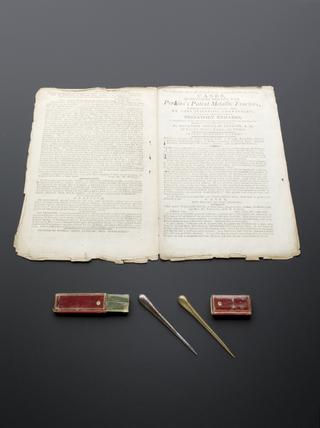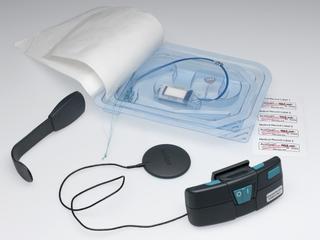

Cardiac pacemaker, for axilla implantation, unique design made at St. George's Hospital, London, 1963
Made at St George’s Hospital, London, this is a unique type of pacemaker made for implantation into the armpit, or axilla. Cardiac pacemakers were developed in the 1960s. They emit regulated electrical impulses. These stimulate the contraction of the heart muscles to provide sufficient rate of heartbeat. A pacemaker is often implanted into the chest of a person whose natural pacemaker is too slow or who has a condition where the electrical pulses are impaired. Pacemakers are now implanted in the chest. Axilla implantation fell out of use with the arrival of lithium batteries. These replaced the mercury-zinc battery used by this pacemaker. One million people worldwide are fitted with pacemakers.
Details
- Category:
- Therapeutics
- Object Number:
- 1981-1517
- Materials:
- complete, plastic (unidentified), metal (unknown) and electronic components
- Measurements:
-
overall: 15 mm x 57 mm x 19 mm, 0.02 kg
- type:
- cardiac pacemaker
- credit:
- St. Georges Hospital (Tooting)




